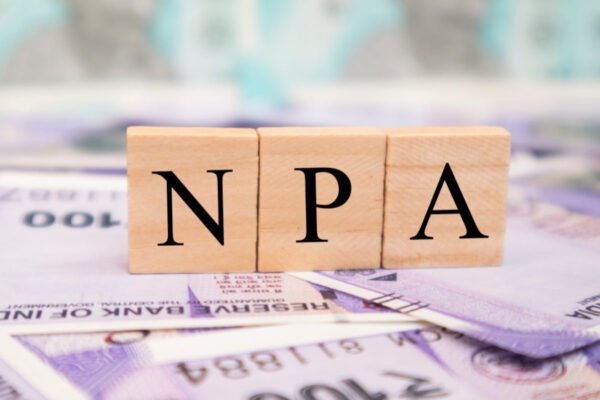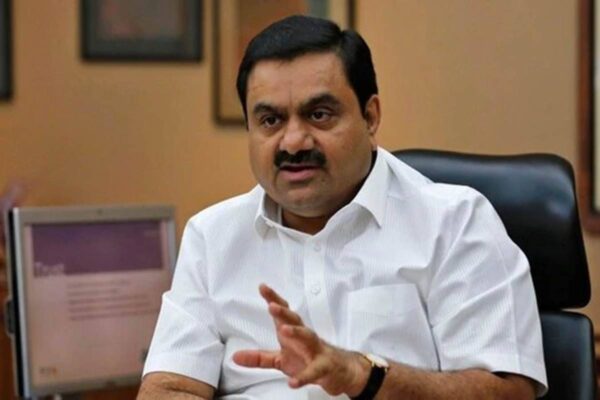India’s Richest & Asia’s Richest Man Adani, Is Also India’s Most Debt Person And Kind Of Willful Defaulter. Gautam Adani Is Biggest NPA Trapeze Artiste’

India’s Richest & Asia’s Richest Man Adani, Is Also India’s Most Debt Person And Kind Of Willful Defaulter. Gautam Adani Is Biggest NPA Trapeze Artiste’
Gautam Adani is the first person from India and the first person from Asia to occur on the Bloomberg Billionaires list.
The combined debt of the Adani Group is $27.5 billion, which is more prominent than the GDP of 80 countries like Nepal, Iceland, and Cambodia. Adani’s net wealth rose from $10 billion in 2020 to $137 billion.
In addition to massive debt, the Adani Group is foraying into new, unconnected, and highly capital-intensive companies with no past experience. The rise of Gautam Adani and his Adani group is often directed to a bubble rising that can burst at any time.
Self-made Indian tycoon Gautam Adani’s wealth has skyrocketed as he supports Prime Minister Narendra Modi’s infrastructure and green energy push. Still, amid the Adani Group’s ambitious expansion, some have questioned the speed and rationality of some of his investments.
The third-largest conglomerate in India after the Tata Firm and Mukesh Ambani’s Reliance Industries, Adani’s ports-to-energy group has been on a deal-making binge recently, spurred by its mounting debt. The ambitious empire-building of 60-year-old Adani is now raising questions about its viability.
The Adani Group was defined as “seriously overleveraged” last week by the debt-research branch of Fitch Ratings, CreditSights, which pegged its debt at US$28.8 billion. The group’s “fast pace of growth and high levels of leverage are driving us, as other clients and other investors, to have worries,” according to critics Lakshmanan R, Rohan Kapur, and Jonathan Tan.
According to CreditSight, which also praised Adani’s “entrepreneurial strategic plan,” Although it warned that debt might bring down his empire, the corporation “has an excellent track record of spewing out solid and stable firms and has a portfolio of exceptional physical infrastructure.”
The shocking ratio heightens concerns about the tycoon’s meteoric rise and aggressive growth aspirations. Adani has been diversifying his enterprise, expanding it from ports and coal mining to airports, data centres, cement, and renewable energy.
These actions have increased Adani’s reputation not only in India but also in wealth; as a result, he is now the richest person in Asia, with a net worth of about $135 billion. A CreditSights study published on Tuesday categorized the company as “deeply overleveraged,” and in the worst-case scenario, it was prone to being caught in debt and going into default. Nevertheless, doubts are growing about whether the spike is sustainable.
In the fiscal year 2021–2022, the combined borrowings of the Adani group increased by 40.5% to around Rs 2.21 lakh crore. It was Rs 1.57 lakh crore in the prior fiscal year. This is quite significant in terms of financial stability.

Due to insufficient disclosure of ownership under the Prevention of Money Laundering Act, the National Securities Depository Limited (NSDL) blocked the accounts of three Mauritius-based funds in May 2021. At the time, the Adani Group’s stock was owned by these funds—Albula Investment Fund, APMS Investment Fund, and Cresta Fund—totalling around Rs. 43,500 crores ($6.2 billion).
The corporation’s promoter firms have given the listed companies in the group long-term loans worth Rs. 35,000 crores. These loans have helped them undertake time-consuming projects, including roads, ports, and airports, while also decreasing their financing costs in FY22.
Adani got a loan from SBI in June 2022 for over 6,071 crores in order to launch a copper manufacturing operation in Mundra. Adani Group was in discussions to get another loan from SBI for over 14000 crores in July 2022 to invest in his company.
India’s willful defaulter loans have risen up to roughly $2.2 trillion. This is a ten-fold increase or a ten-time increase over the last ten years. 95% of these loans have been given by public sector banks. Out of this, 30% of the loans have been given by SBI alone.
So what is precisely meant by wilful defaulter?
Wilful defaulters are people who can technically pay the loans by selling off their assets, but they are choosing not to pay those loans by exploiting some kind of loopholes.
India’s Richest & Asia’s Richest Man Adani Is Also India’s Most Debt Person & Kind Of Wilful Defaulter, and indeed the Adani group owes big chunks of money to banks.
When it comes to NPAs (non-performing assets), often known as bad loans, which are essentially sums of money got from a bank and not repaid in a timely manner, Vijay Mallya and Nirav Modi are only guppies.
Larger fish in the NPA pool, like Gautam Adani and his group, are attracting a lot of attention. Every other day, they make headlines due to an acquisition, a loan request to a public sector bank, or the enormous debt trap the Adani group is in.
The truth that the PSU banks are giving corporate houses such debt restructuring concessions, which seem to have the RBI’s approval, suggests that the RBI and the PSU banks have both become willing parties to excessive debt, as is now being revealed in the case of the Adani Group. In the case of a private firm, it is frequently such overleveraged debt that develops into an NPA. The RBI should be concerned, right?
Trapeze Artist Adani now owes banks Rs 2.2 lakh crores in NPA. But after 2016, his wealth doubled every two years. Why is he unable to repay the banks? Perhaps, like the six airports he has purchased, he will soon buy out all the banks to which he owes money.

For a really long time, Gautam Adani has been on the big headlines. In 2018, BJP leader Subramaniam Swamy remarked that the Adani Group is an “NPA trapeze artist”. He was under the list of most debt person and a wilful defaulter. According to Swamy, Adani is reported to have Rs 72,000 crores in NPA. Hence an investigation against him should be done.
In response to Swamy’s remark, the Adani Group stated that it is regularly servicing all of its debts. Adani Power, although incurring losses, never missed a loan payment during a period when other power companies were.
Gautam Adani is the “greatest NPA trapeze performer,” according to Subramanian Swamy, who also cautioned that it is high time for the billionaire tycoon to appear in court. “Gautam Adani is the biggest NPA trapeze artist in PSUs. He must be held responsible soon, or a PIL will undoubtedly result.
Swamy’s charge comes amid an increase in incidences when law enforcement officials in the nation have accused various business groups in the nation of money laundering and willful default.
In 2018, when everyone remarked on the group for its bad loans or NPAs, at that time also, the group refused the statement and clarified that it had diligently and regularly serviced all its debt. Even 5-6 years back, the situation is the same.
Now in 2020, the creditsights reported the group as “deeply leveraged” and “worst case scenario”, again the Adani group came with such statements like ”we’ve serviced our debts” to defend itself, but how come India’s richest person is also India’s most debt person and NPAs defaulter?
Adani and his group kept on acquiring loan from the banks and kept on investing in the various sectors they didn’t even have sufficient knowledge of. The time will come when these huge clouds of massive debt will burst on his head soon.
When Narendra Modi was selected as the BJP’s prime ministerial candidate in September 2013, Adani’s net worth was $1.9 billion. By the time Modi became prime minister in 2014, the price of Adani’s stock had more than tripled. Adani had only increased its fortune’s value by $1 billion over the previous three years, but if we are to believe the Harun Rich List, 2017–2018 has sparked yet another spike.
Why has Adani ascended against all odds?
As the Adani family owns nearly 75% of all his namesake group’s seven publicly traded firms, Adani’s explosive growth has really been driven by their soaring stock values.
Over the past three years, the aggregate market value of those businesses increased tenfold to US$220 billion.
Equity analysis firm Equitymaster reported that investors have been in an Adani stock “frenzy,” in part because of investors who have “FOMO” (fear of missing out), while some “perhaps believe he is too giant & big to fail now.”
In the meantime, it stated that the group’s businesses are trading “at valuations much higher than the sector average, indicating they are tremendously expensive,” despite their amazing growth, leadership positions, or alignment with Prime Minister Modi’s vision for the nation, according to reports.
The Adani group not only borrows directly from banks, but it also utilizes a portion of that money to buy equity in companies, which it then pledges to raise additional borrowings.
Adani Properties is one illustration of this. In 2015–16, it purchased 99,491,719 shares of Adani Transmission, of which 2,16,09,865 were pledged as security for loans. As previously mentioned in this study, the organization also generates money through the pledge of some of its physical assets, such as the electricity transmission lines owned by Adani Transmission India.
No one is interrogating him, and he gets away with a lot. The government and authorities must keep focusing on Gautam Adani and his group as the biggest loan defaulter.

All of these cases—from Mallya to Modi—are minor compared to the default case involving Adani in terms of the loan amount. A thorough strategy must be in place before taking on the case. It is difficult to see how banks will be able to recoup a sizable portion of the money at risk, even with the bankruptcy code in place, given that they must either sell the assets or make the promoter who defaulted payback from his own pocket.
Ultimately, expansion supports the group’s viability. As we observed with Adani Transmission India, money from new firms also returns to holding companies. Adani businesses with better debt-to-equity ratios are taking out bank loans and making debt or equity investments in their questioned sister companies. This indicates that the group is always growing in order to finance its expansion.
Given that PSU banks, which are owned by both the Government of India and the general public, will have to shoulder the majority of this debt, it creates significant public interest issues.
According to the Banking Regulation Act, the RBI is mandated by law to oversee bank operations in order to protect the interests of equity investors and depositors.
Edited by Prakriti Arora




